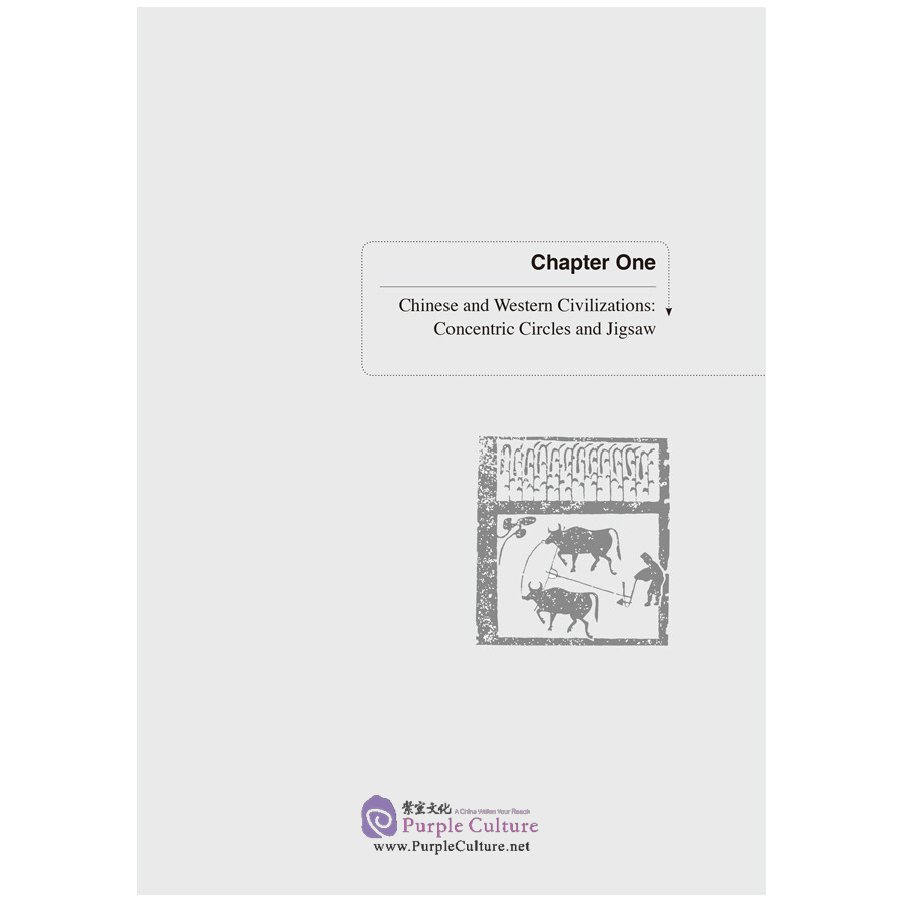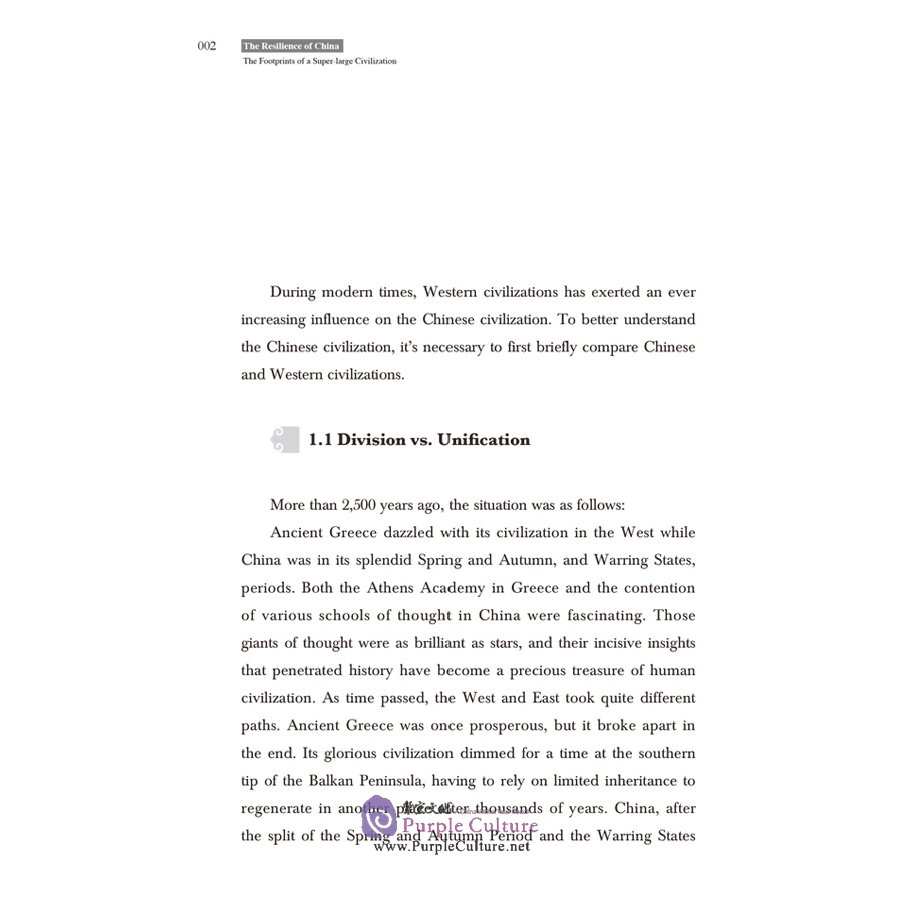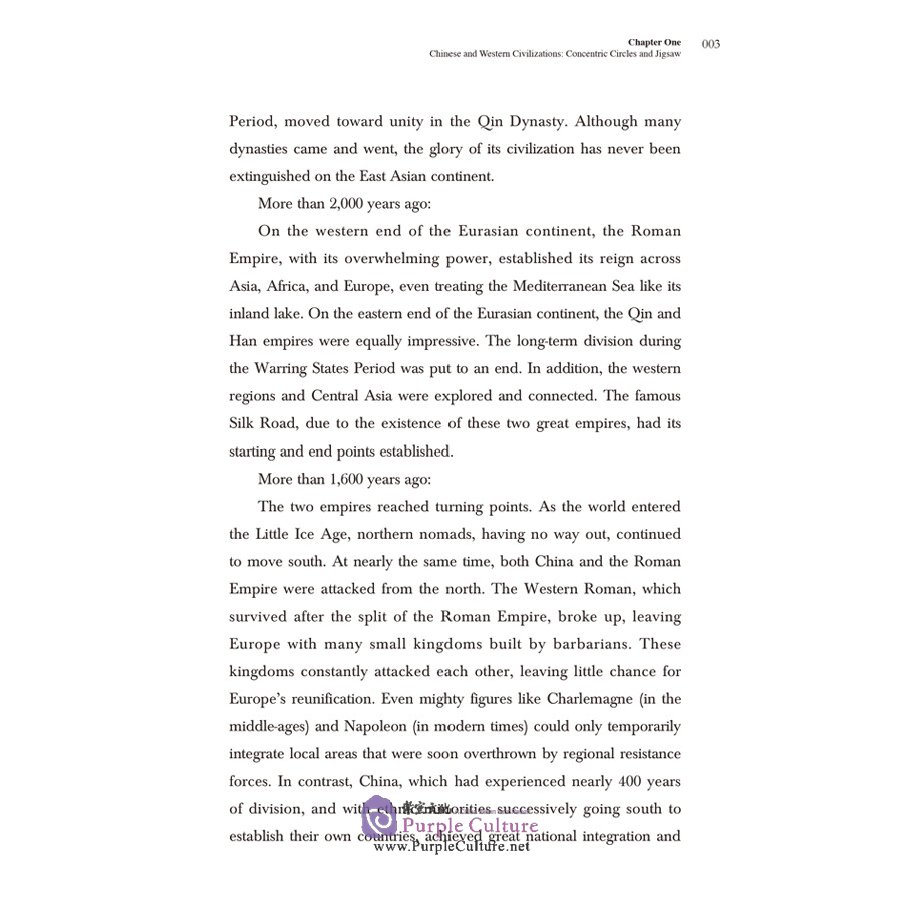Introduction / I
Chapter One: Chinese and Western Civilizations: Concentric Circles and Jigsaws / 001
1.1 Division vs. Unification
1.2 The West: Oceans and Centrifugal Forces
1.3 China: Farming and Centripetal Forces
1.4 Concentric Circles vs. Jigsaws
Chapter Two: From the Shang Dynasty to the Zhou Dynasty: Retreat of Shangdi and Prominence of “Virtues” / 013
2.1 Yin Shang: The Rapid Demise of a Powerful Dynasty
2.2 Shangdi: Sources of Shang’s Destiny of Heaven
2.3 Virtue: Discovery of the Zhou Dynasty
2.4 People-oriented: Essence of the Rule by Virtue
2.5 The Patriarchal Clan System: Maintaining Stability of the Political Community
2.6 Feudalism: Initial Construction of a Large Country
2.7 The Tianxia System and Civilization of Rituals and Music
2.8 The Tianxia System vs. Greek City-State Politics
Chapter Three: From the Zhou Dynasty to the Qin and Han Dynasties: Failure of Feudalism and Establishment of Counties / 045
3.1 Total Collapse of Feudal Order
3.2 Background of Contention of a Hundred Schools of Thought: Centralization of Power and Escalation of War
3.3 Confucius: The Restoration of Rituals and Music, and Cultivation of Scholars (I)
3.4 Confucius: The Concentric Circles Structure of Benevolence (II)
3.5 Mozi: Equal Love and Organizational Building
3.6 Laozi: Self-control of Power
3.7 Legalism: Strict “Performance Management”
3.8 The Qin Dynasty: The First Unified State with a System of Prefectures and Counties
3.9 The Systematic Process of “Great Unification”
3.10 The Han Dynasty: Dong Zhongshu and Prevalence of Confucianism
3.11 Development of Enlightenment and Cultivation of Customs
3.12 Integration Degree: Qin and Han Dynasties vs. the Roman Empire
Chapter Four: Changes between the Tang and Song Dynasties: End of In?uential Clan Society and Rise of Civilian Society / 101
4.1 Rise of Influential Clan Society and Its Influence
4.2 Wei, Jin, Southern, and Northern Dynasties: Era of Great Division
4.3 Sui and Tang Dynasties: Integrating Grassland and Farming
4.4 The “Terminator” of Influential Clan Society: The Imperial Examination System
4.5 Scholar-officials and Emperor Ruling Country Together
4.6 Third-party Observations on the Imperial Examination System
4.7 Neo-Confucianism in the Song Dynasty and Reorganization of Civilian Society
4.8 The Ming Dynasty under the Early Modern World System
Chapter Five: From the Yuan to Qing Dynasties: An Era into “Great China” / 155
5.1 South-North Relations: Farming and Nomadism
5.2 Great Contribution of Nomadic People
5.3 The Yuan Dynasty: The “Great China” Era Opened in Full Swing
5.4 The Ming Dynasty: Maintenance and Deepening of “Great China”
5.5 The Qing Dynasty: Full Integration of “Great China”
5.6 Different Fates of the Qing Dynasty and Two Cotemporaneous Empires
Summary / 189
Postscript / 207


